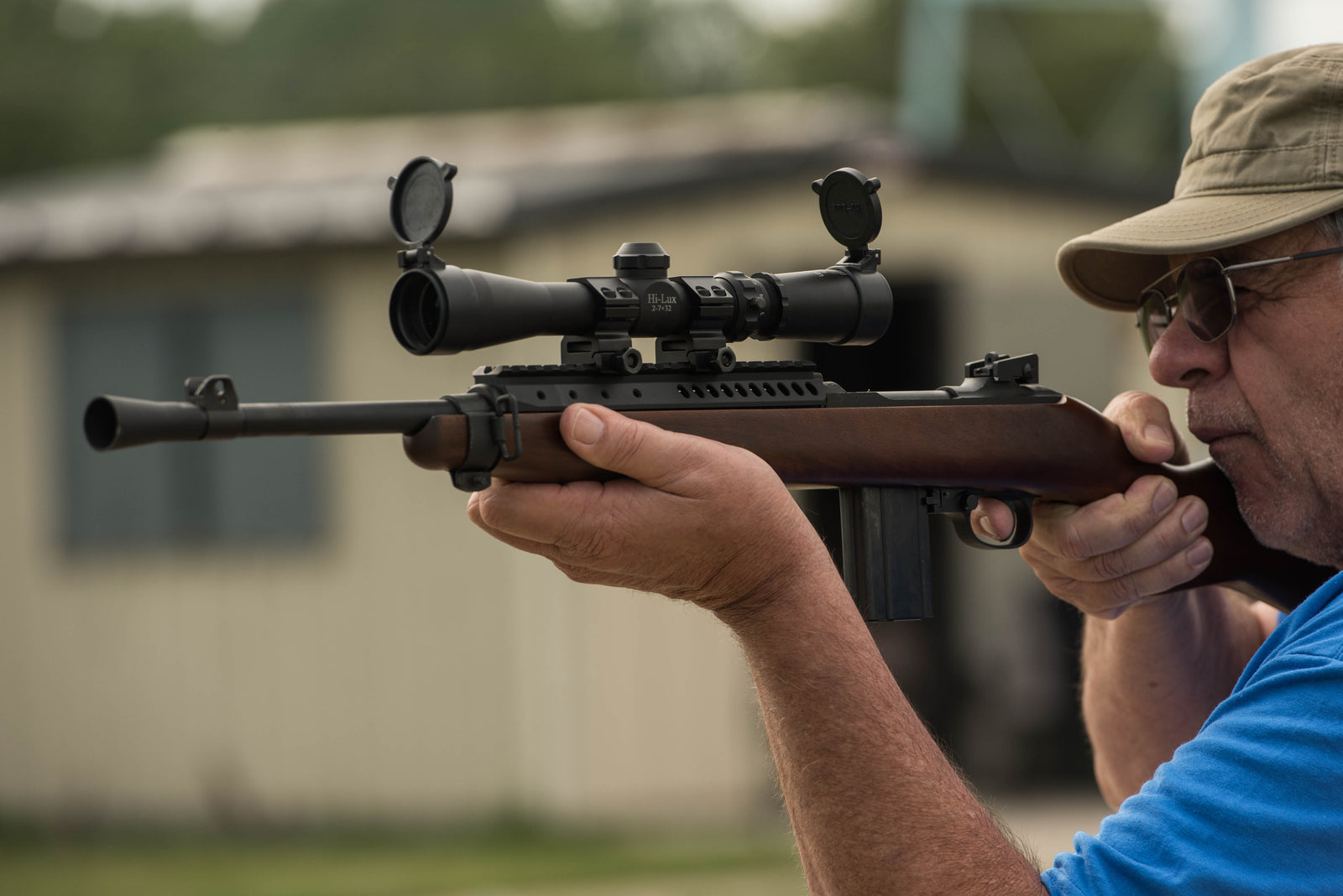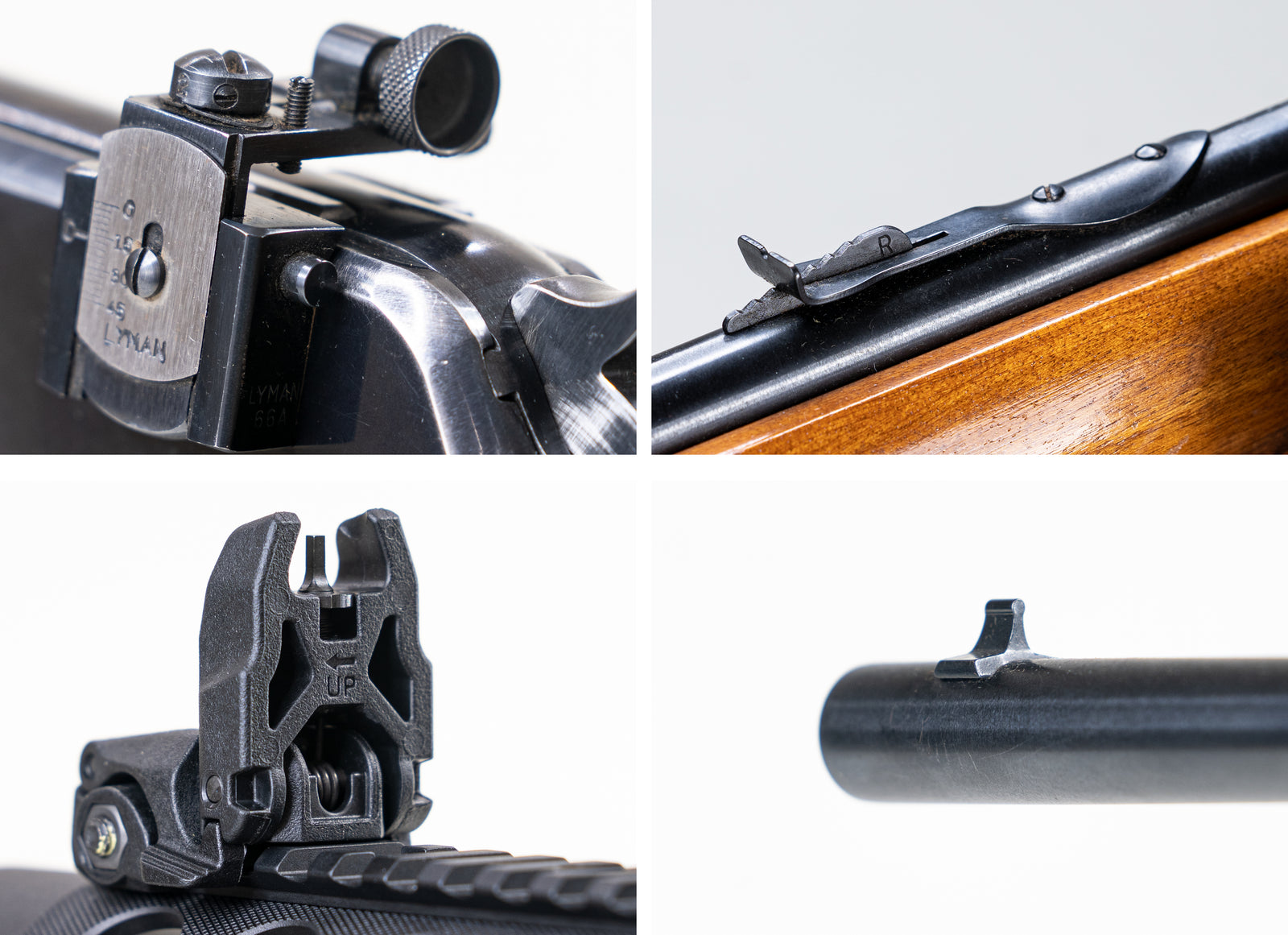What is an LER Scope?
... and what is eye relief?
Shooting, like so many physical processes, is a perfect demonstration of Newton's third law. When you fire, the rifle will recoil backwards. Provided everything works as intended, the bullet goes forward. Fortunately, rifles weigh much more than bullets. This helps cut down on the felt recoil - the actual force that's transmitted into your shoulder.
If your rifle has a scope on top of it, the scope will be riding the rifle as it recoils backwards. When that scope starts too close to your eye or when the recoil is too strong, the scope will hit you in the face. This is known as
scope bite.
Editor's note: scope bite is bad, and generally hurts. The distance between a scope and your eye is known as
eye relief. It truly is a relief to your eye not to be hit.

Long ago, Charles Willson Peale discovered the
benefits of eye relief... namely, that it was important to have at least some eye relief when a rifle is recoiling back toward you.
Side note - his first attempted fix was to make a spring-loaded cushion. We've moved on from that, and now simply provide space between you and the scope.
Eye relief can vary. Some scopes give you a full sight picture (viewing area) when the scope is quite close to your eye. Others prefer to sit farther away. For most scopes, this distance is about 3-4".
A few scopes are built to sit much farther away. They have a much longer eye relief than is standard. For this very simple reason, they're called
long eye relief scopes. Sometimes, you'll see that written as
LER. An LER scope will generally have at least 6" of eye relief. Some allow you to sit back more than a foot from the scope, while still giving you a good sight picture.
What benefit does an LER scope give over a normal scope?
What problems does an LER solve?

Some rifles are very light and have a serious amount of recoil. I could tell you some stories about a .416 Rigby hunting rifle that left a deep impression. The standard eye relief of ~3" might not be enough to prevent a scope from hitting you in the face. As a safety measure, it might be a good idea to choose a scope that sits farther away.
For hunting purposes, you might want to have a view of much of the area in front of you. The rifle is going to block some of your natural field of view. When your face is pressed down on the stock, your the lower half of your right eye's vision is pretty much blocked out. Your lower left vision will be blocked by the rifle and your support arm. Meanwhile, a nearby scope is going to eat up most of the center of your right eye's vision, as well as the full right side of your left eye. All-in-all, a rifle with a scope prevents you from seeing quite a bit of what's in front of you. Iron sights block less of your vision, but don't provide any magnification. An LER scope, by sitting farther away, also blocks less of your vision. You'll be able to see the area around your target in addition to having a magnified view of your target.
The last fix an LER provides is a much more physical one. Some rifles - especially older models built before scopes were commonplace - ejected empty cases straight up (many lever actions). They may also even load from the top (Garand). The bolt handle might not provide clearance for a scope to be mounted. The hammer might get in the way (Sharps). The long and short of it is - a scope might get in the way of how a rifle is built to function. By setting a scope a few inches farther forward than the norm, many of these problems simply vanish.
What limitations does an LER scope have?
Due to the distance at which an LER scope sits, there are a few functions for which it isn't suited.The biggest difference from a normal scope is simply how much less of your natural field of view the scope takes up. Despite having a full sight picture through the scope, it'll be smaller to your eye than a normal scope would be. It's simply farther away from your eye. This is the balance for having a better view of the field - more environment in your view, less scope.
Piggybacking off the above point - LER scopes tend not to have high magnification. They're best suited to a scout or hunting setup, where a view of the surroundings is as important as a bit of magnification through the scope. You can still benefit from seeing a bit of space around the target when looking through the scope, as this aids in finding the target with your optic. Having too high magnification will make finding your target difficult, and doubly so when shooting offhand.
The final potential issue lies again in the distance at which an LER scope sits. Many modern rifles are built to have a scope sit right over the action. They may not have the rail space to mount an LER scope far enough away. And, similarly, old rifles that would require an LER scope might not have any rail or rings at all. This may require a new rail or a bit of gunsmithing to fix.
Why would I need an LER Scope?
Let's take a look at the rifles best suited to demonstrate how an LER scope can help:
Designed to fit the wisdom of Jeff Cooper, the classic
Ruger Gunsite Scout, Steyr Scout, and Savage 110 Scout provide solid all-purpose rifle solutions. They're not built for precision at great distance - instead, they focus on getting solid hits from a full power (.308 Win) cartridge within a few hundred yards. Perfect distances for hunting, these Scout rifles are built to be mobile, lightweight, and provide rugged solutions to tough environments. LER scopes are among the lightest of magnified optics, and stay out of the way of the bolt handle or cartridge ejection.
The M1A is considered a pseudo-Scout, mainly due to the couple extra pounds this rifle packs on. It's also a semi-automatic, which Cooper wasn't so keen on at the time of his original concept. The carbine form of the rifle, along with a LER scope mounted forward of the action, is a useful tactical solution in environments where you'll encounter a mix of medium and close range targets.
In the realm of classic rifles, we encounter the Swiss K31. A top-loading straight-pull bolt action, having a scope forward of the loading zone prevents you from needing to offset the scope. Similarly, the Karabiner 98k (Mauser 98k) is a top-loading rifle with a rotating bolt, both of which would make a standard-position scope a liability. To round out this classic list of top-loading rifles, we have the Mosin Nagant and Lee Enfield. Unless you want to slip in one round at a time through a narrow opening, moving the scope will be a necessity.
Curiously, an LER scope also makes its way onto various lever action rifles. The Marlin 1895, though side-ejecting, is one that fits the same arena as a Scout rifle. Meant to be lightweight, compact, useful within a couple hundred yards, and functional as a hunting rifle, many lever action rifles fit the bill. Others, such as the Henry Big Boy, have a receiver shape and size that doesn't always accommodate a rail easily. In lieu of a receiver-mounted scope, a barrel-mounted LER scope works perfectly.





Leave a comment (all fields required)